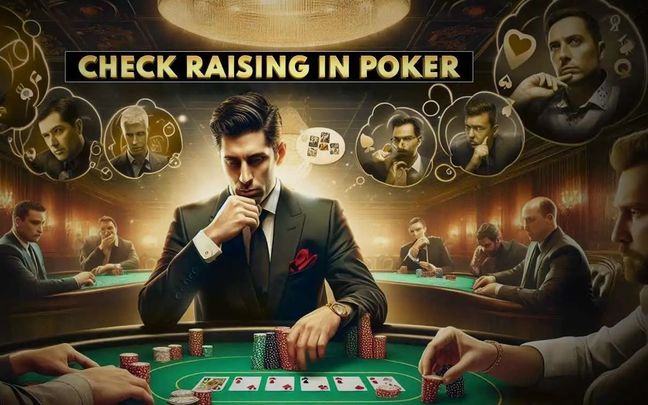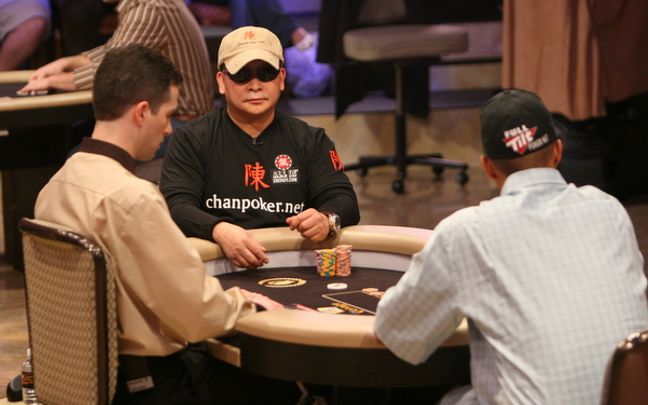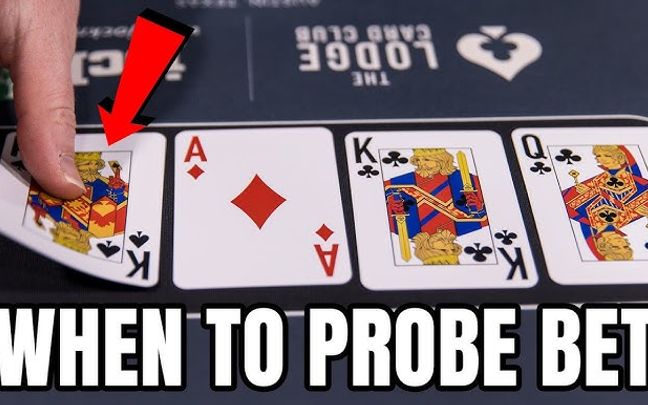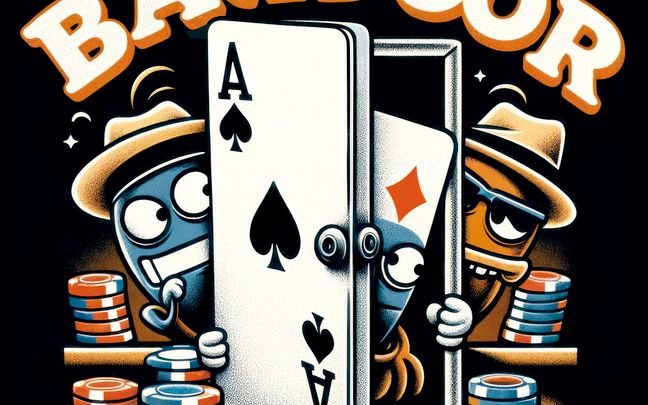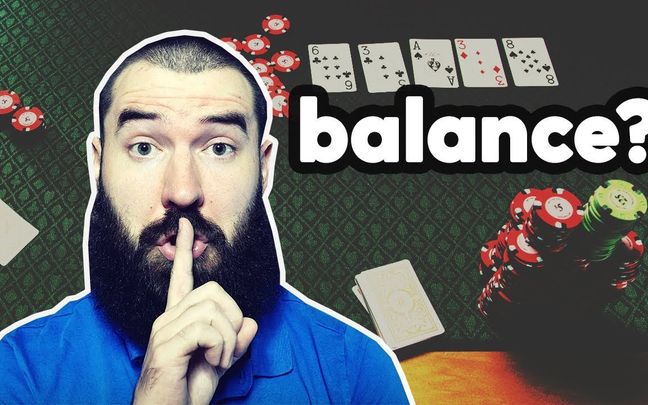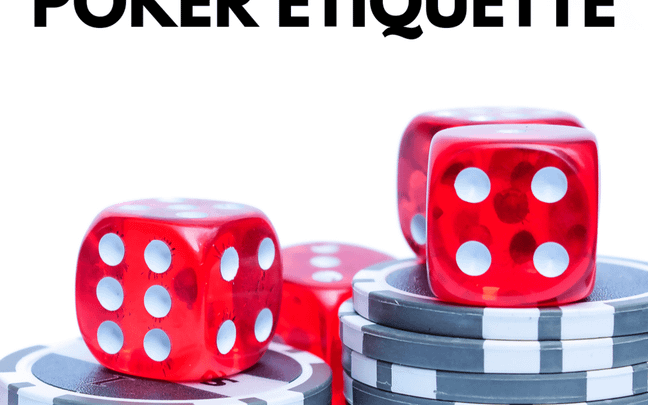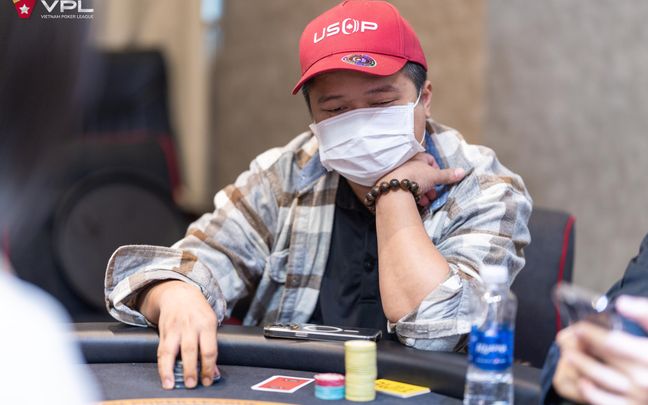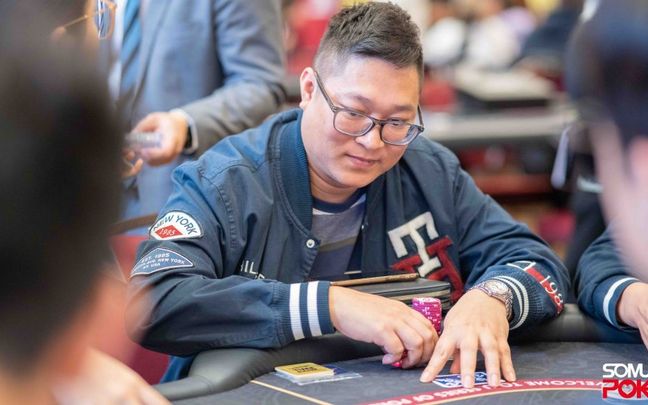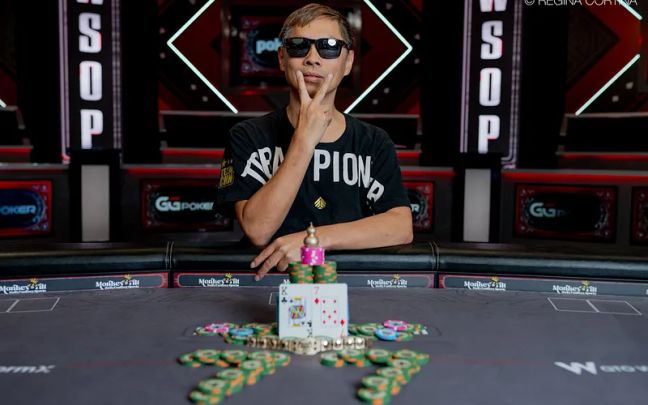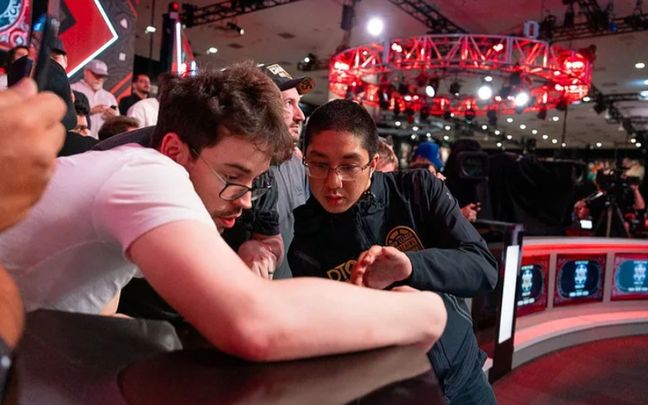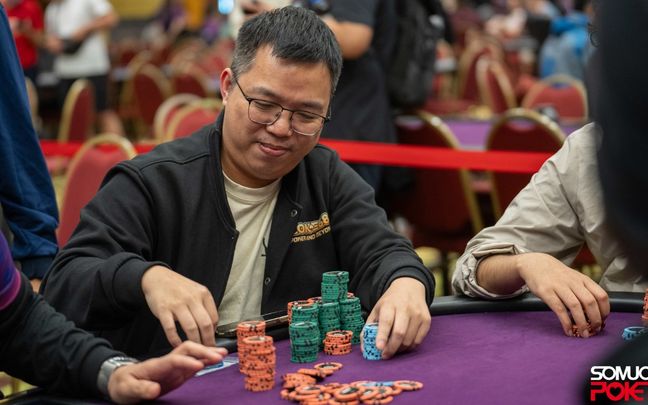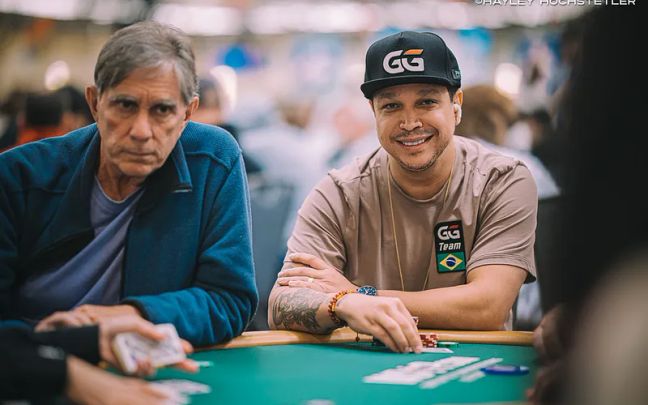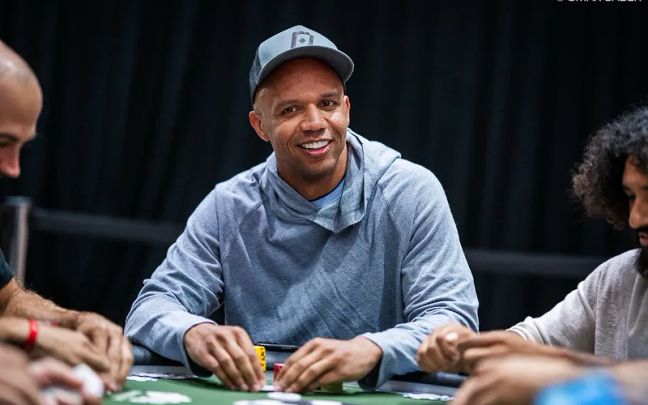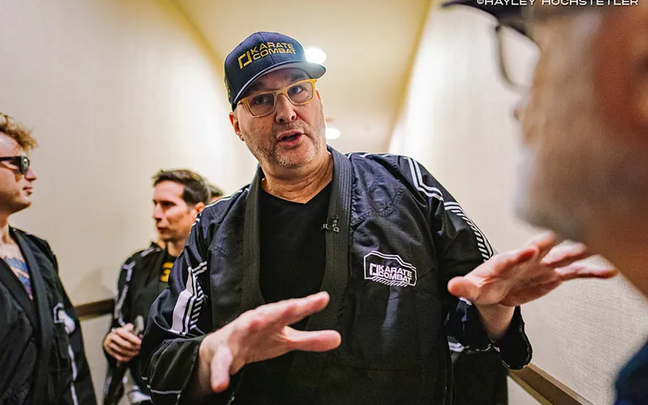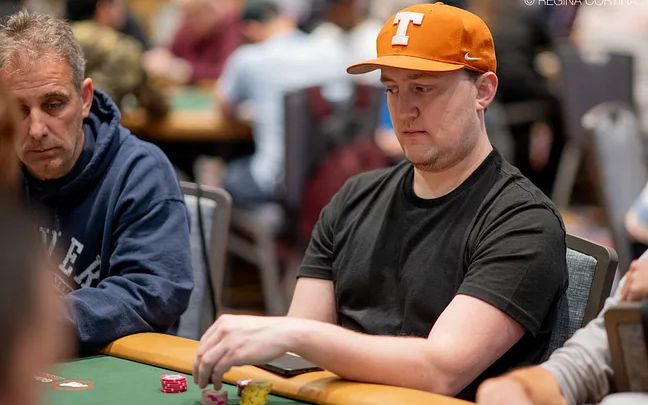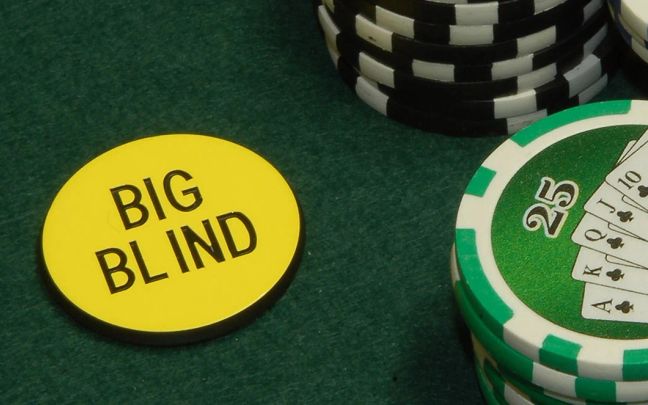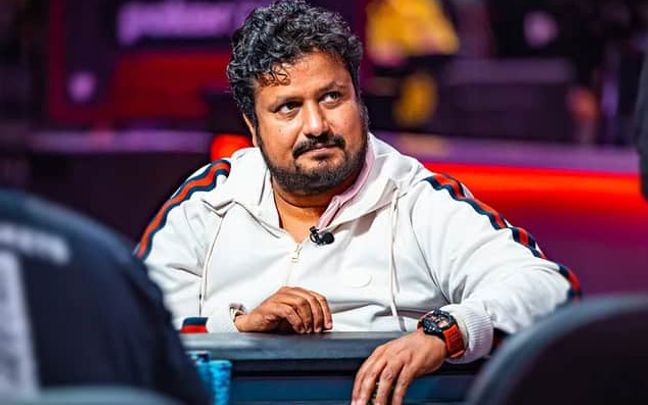There isn't a specific type of player in a poker tournament, and you never know exactly who will be seated at your table. There can be methodical players whose goal is to have fun. Although no two opponents play exactly the same, you can categorize them into common groups.
Drawing from my poker experience, here are Darren Elias's (a poker coach) suggestions on the five types of players, along with an analysis of each type. Understanding how to play poker and gaining poker experience can help you better grasp strategies and methods to counter each type of player in a poker tournament.
1: The Strong Professional:
The first type of player we’ll talk about is the type 1 strong professional. This is a very good player, and that can mean a lot of different things depending on the stakes you’re at.
This is a player who isn’t going to make major mistakes, is generally well-studied, and has good natural intuition. The general theme with these guys is that they’re going to play ranges similar to our baseline ranges.
They’re going to play well fundamentally and they’ll usually be familiar with computer play in many scenarios like what the Solver would do. Especially preflop and on the flop. And they may be randomizing in mixed strategy scenarios.
Something to keep in mind against very good players is they’re not all created equal, and it’s still worth watching them to see what kind of tendencies you can pick up on. They don’t play perfectly. These players will still make small errors preflop.
Postflop, these players are going to play similarly to our baseline strategy, especially on the flop. They’re going to be mimicking computer play in the sense of knowing the right sizes on the right board textures. While we should respect them, we must also know they’re not invincible and they can be beaten.
While you can compete with these players by having a strong, theoretically sound strategy, hopefully your table doesn’t have too many of them!
#2: The Loose Professional
The next type we’ll talk about is the loose professional. Loose in the sense that most of the mistakes they’re going to make are making plays that are too loose, whether that be preflop or postflop.
Preflop tendencies we’ll see from these players: a very high VPIP, especially RFI and 3-bet.
These loose pro types will come with a lot of front-end aggression. You’ll see them opening hands that are baseline folds, 3-betting hands that might be baseline folds, and flatting hands that we’re folding.
They may play higher than baseline 4-bet, and they’ll probably play loose around the bubble even if not a big stack. I see these players often kind of ignoring some ICM pressure implications and still making these loose opens.
Postflop, they’re typically very aggressive. On the flop they’re often over c-betting, usually for a small size (especially at the smaller stakes). They will often find flop check-raises, so they’re very aggressive on the flop as a whole. And they may or may not be looking to run multi-street bluffs.
These players can be tough to play against, but their aggressive tendencies can sometimes be costly!
#3: The Tight Professional
Type 3 would be our tight professional player. They make mistakes that are generally too tight. Preflop, in contrast to the loose professional, they’re going to have a low VPIP across the board. What that will look like is overfolding in the Big Blind, folding hands that are baseline opens or calls, flatting hands that are baseline 3-bets, etc.
So generally tighter, more passive play. Generally very tight play around the bubble. And one thing with these types of players is they will be generally stoic in their baseline preflop ranges. They have a system within which they’re playing and it’s going to be consistent.
They are usually aware of their image and aware of other players’ aggressiveness. And I would say these types of tighter players look to trap aggressive players. Postflop, these guys rarely run multi-street bluffs. They’re rarely battling for small pots. And the biggest errors typically occur in wide range spots. They generally overfold to c-bets.
One big thing you’ll see from these guys is they often go to showdown in situations where their hand cannot win. We’ll see more of the one-and-done type bluffs out of these players, like a single street. They also will tend to pot control over cautiously. They will frequently miss thin value bets, so keep that in mind when facing later street aggression from them.
When facing these players, it can be good to over-bluff and over-fold!
#4:The Loose Recreational
Our type 4 player will be our loose recreational player. A guy who’s always fun to play with, and similar to our loose pro player, it will be a high VPIP across the board. They’ll flat hands that are baseline folds. They may cold call 3-bets with hands that are baseline folds. And they’re generally not concerned with the math or entering losing situations preflop.
Often these players are focused on making a hand and playing a big pot. But they’re not really worried about the expected value (EV) of their chips going into the pot preflop. They rarely fold in any blind versus blind scenario and often don’t adjust their Big Blind defense range to positional open.
Postflop, these players may just be trying to connect on boards and make hands, essentially playing bingo. That is a common strategy I see of these guys, especially at lower stakes. They may run multi-street bluffs with hands that do not make sense.
Oftentimes, we’ll get to showdown in a pot against a player like this, and there’s no way you could have put them on that hand. So you kind of have to have that mindset going into it.
And they will sometimes base their bet sizes on hand strength. With enough data on players like these, you can usually pick up on some sort of pattern in their bet sizes related to their hand strength.
These players can be some of the most profitable once to play against!
#5: The Tight Recreational
The last player type we’ll talk about here is the type 5 tight recreational player. Similarly to the tight professional, they have a low VPIP across the board. They’ll over-fold from the blinds, flat hands that are baseline 3-bets, fold hands that are baseline opens, etc. They’ll generally play tight around the bubble.
These types of players are usually concerned with pay jumps, whether it be a final table or the next pay jump. They may use some open limp strategy, especially in early position. They may use different opening sizes with different hand classes.
Postflop, they usually won’t run multi-street bluffs. They won’t battle for small pots. They’ll miss value bets, willing to just go to showdown and not re-open the action. They will over-fold to c-bets and often go to showdown in situations where their hand cannot win.
They’re often inelastic with weak holdings, meaning if they don’t like their hand and the board texture, it doesn’t matter how much you bet. You can get away with using some very small bet sizes against this type of player. And on their end, they’re going to be basing their bet sizing on their hand strength or perceived hand strength, so how they feel their hand is in this situation, which may not be accurate.
And lastly, they will have inconsistent play and be subject to emotion. I’ve seen tight recreational players play incredibly snug for long periods of time, and then just lose it in one hand and play a hand completely out of character loosely.
These are the kinds of players you can run over at the table!
Final Thoughts
These are five common types of players you might encounter at a poker tournament table. Observing them carefully, gathering information, and exploiting their mistakes can help you advance in a tournament. By understanding the playing styles of each type of player and applying appropriate strategies, you can increase your chances of winning and achieve good results in poker tournaments. Keep learning and honing your skills to become a formidable opponent at the table.
